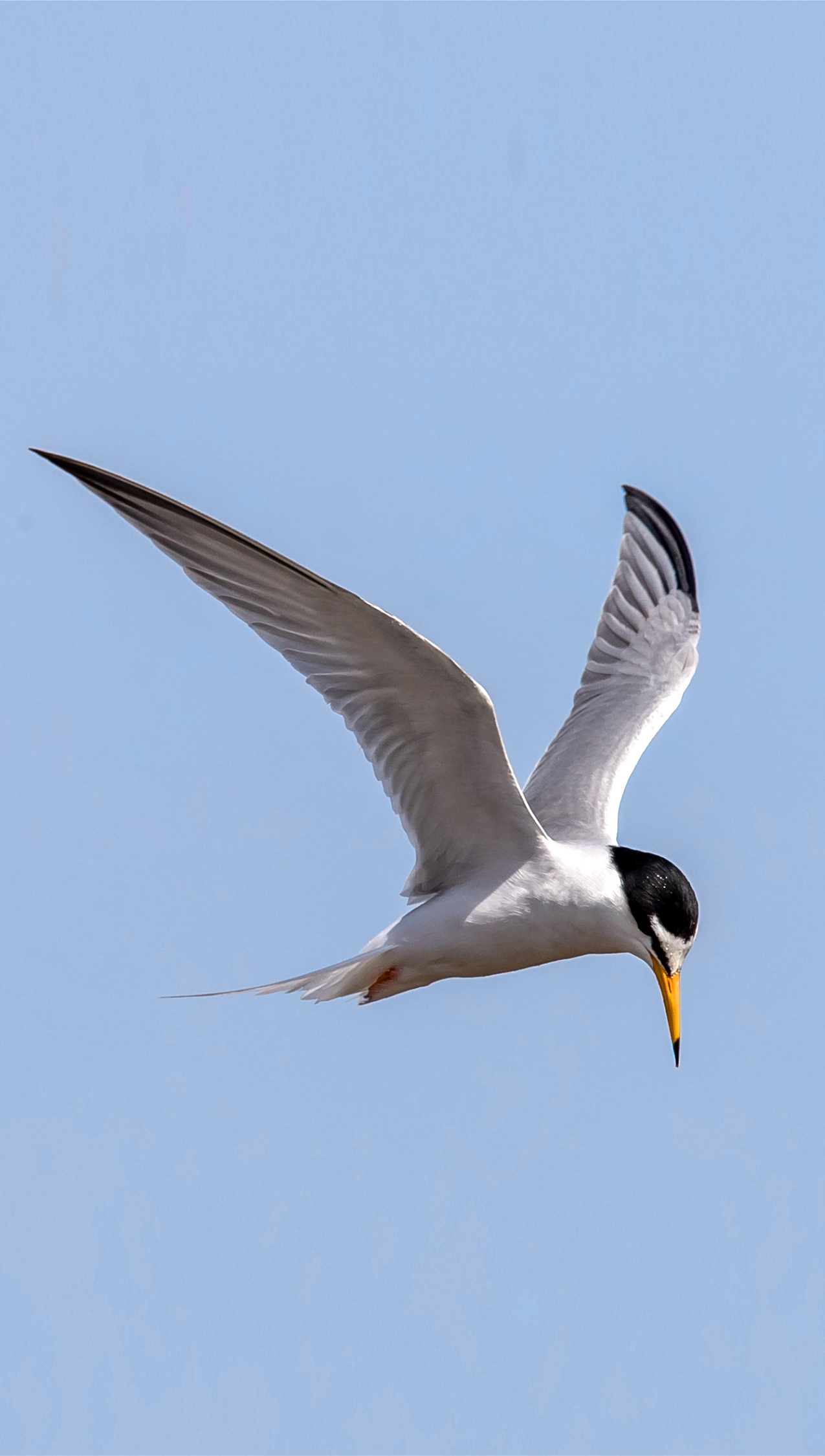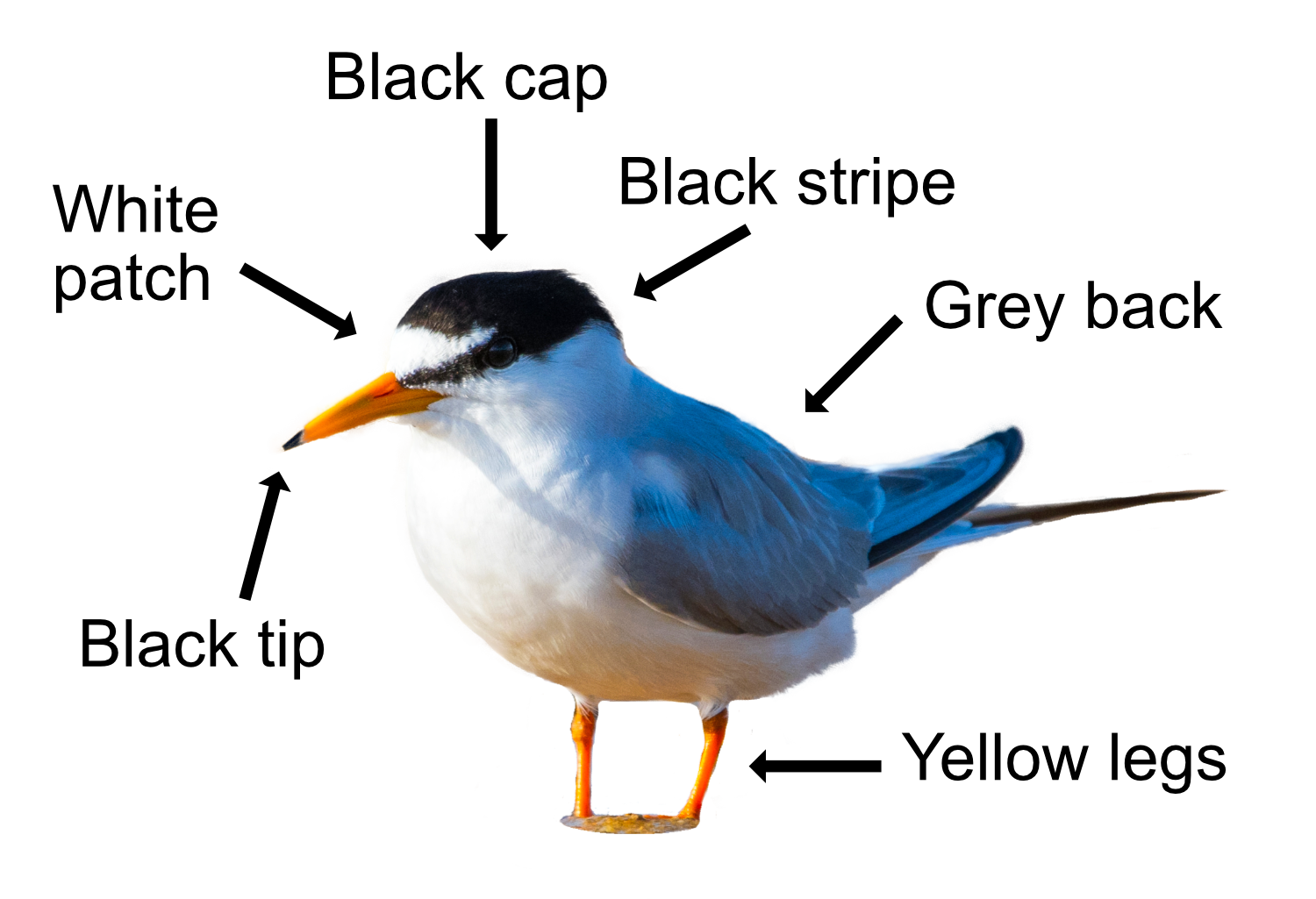
The Little Tern would be better called the ‘Tiny Tern’. It looks small compared to other Terns, being the size of a Starling, the weight of a tennis ball, and a third of the size of a Common Tern. It is a scarce summer visitor, coming to our sandy and shingle beaches between April and September after spending the winter on the west coast of Africa, 5,000km away.

The Little Tern is dumpy looking and slightly tubby chested with a grey back, a black cap, and a white forehead with a black stripe through the eye. It has yellow legs and a yellow bill with a black tip. Its wings are long and slim with dark outer flight feathers and the tail is deeply forked. It flies with ultra-fast, flickering wingbeats and often hovers, calling with a shrill, excited "Kik, Kik!"
They feed mostly on sand eels and young herring, by hovering and then plunge-diving into the water to catch them. They will also feed on shrimps and small invertebrates. The Norfolk name for the Little Tern is ‘Little Pickie’, because of the skilful way they ‘pick’ fish from the sea.
Fish feature heavily in their courtship, during which the male puts on an impressive aerial display that involves carrying fish to attract a female. The female will chase him high into the sky to show she likes his choice of food. The male then descends in a graceful glide with wings held in a 'V' shape and offers the fish to her. Their nesting starts in May. The number of eggs laid and the survival of the chicks largely depends on food availability. The nest is a shallow scrape in the shingle close to the high-water mark. It is not much of a nest and is vulnerable to storms and high tides. They lay 1-3 camouflaged eggs on the ground, which makes them an easy target for predators such as gulls, foxes, stoats, crows, snakes, and even herons - just about anything that fancies eggs for breakfast. However, like all terns, the Little Tern is very defensive and will heroically attack any intruders. They often nest in colonies for extra protection. The eggs hatch after 20 days and the youngsters are soon mobile, leaving the nest and hiding amongst the nearby shingle. They can fly 19 days later and are fed by both parents for several weeks.
The Little Tern, sadly, is becoming a scarce summer visitor with only about 1,500 pairs breeding in Britain. Their nesting colonies are often on beaches liked by holiday makers with dogs and the nest often fails if it gets accidentally disturbed. The Little Tern is Amber listed, but protection schemes now operate in several parts of the country to try to help them. They can live to a ripe old age, with the oldest ringed Little Tern living to over 21 years old!
Their Latin name is 'sternula albifrons' where 'sterna' means 'tern' and 'albifrons' is derived from the Latin 'albus' for 'white' and 'frons' for 'forehead'. A Tern with a white forehead is close enough to how they look.